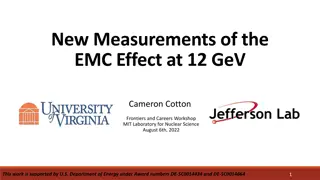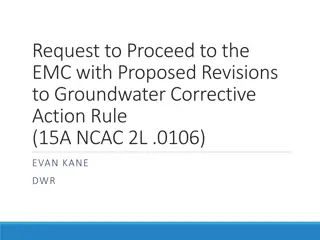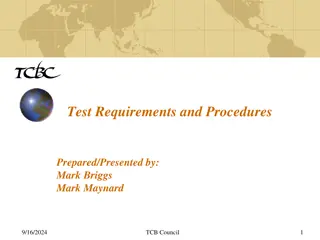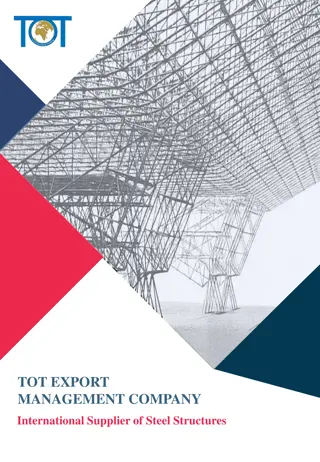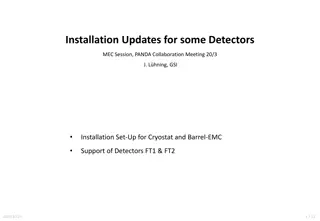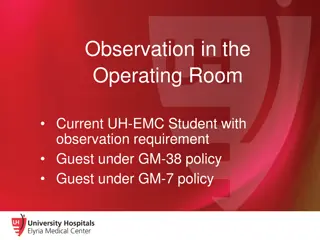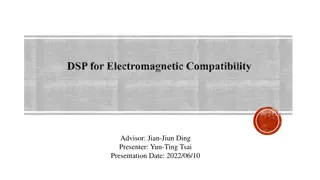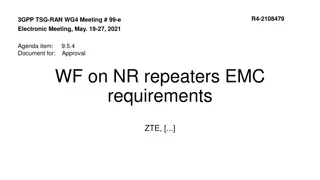
Understanding High-Speed Performance Factors in Connectors
Explore the primary electrical factors affecting high-speed performance in connectors such as mutual inductance, series inductance, and parasitic capacitance. Learn about how connectors create crosstalk and EMI, estimation of crosstalk, and ways to reduce connector emissions. Discover the impact of ground on altering return-current paths and the significance of mutual inductance in connector pins.
Download Presentation

Please find below an Image/Link to download the presentation.
The content on the website is provided AS IS for your information and personal use only. It may not be sold, licensed, or shared on other websites without obtaining consent from the author. If you encounter any issues during the download, it is possible that the publisher has removed the file from their server.
You are allowed to download the files provided on this website for personal or commercial use, subject to the condition that they are used lawfully. All files are the property of their respective owners.
The content on the website is provided AS IS for your information and personal use only. It may not be sold, licensed, or shared on other websites without obtaining consent from the author.
E N D
Presentation Transcript
1 9. Connectors
2 Primary electrical factors affecting high-speed performance in connectors Mutual inductance cause crosstalk Series inductance slows down signal propagation and creates EMI Parasitic capacitance slows down signal propagation
Derivation of mutual inductance of connector pins 4 H ? = ???? ? Current 4?? ? ? ? ????? =??? ? ? ? ?= ? ?? = 4?ln ? 0 ? ? ? ? ? ????? =??? ? ??????= ? ?? = 4?ln ?/2 0 ?/2 ? ? ? ?????? Diameter : D ??,? ? + ?????? ??????? =?? 4? ? ? ? ln + ln ?? ?/2
9.1.1 Estimating crosstalk 5 Mutual inductance between two loops The maximum rate of change of the source signal current dI/dt The impedance of receiving network and whether it is source or end terminated.
6 ?? 0 ?0 ??+ ?0 ??= ?0
15 9.3 Parasitic capacitance : using connectors on a multidrop bus
16 Characteristics of RS232, RS422, RS423 and RS485 RS-485 RS232 RS423 RS422 RS485 Differential no no yes yes Max number of drivers Max number of receivers 1 1 1 10 1 10 32 32 half duplex full duplex half duplex half duplex half duplex Modes of operation Network topology point-to-point multidrop multidrop multipoint Max distance (acc. standard) 15 m 1200 m 1200 m 1200 m Max speed at 12 m Max speed at 1200 m 20 kbs (1 kbs) 100 kbs 1 kbs 10 Mbs 100 kbs 35 Mbs 100 kbs Max slew rate 30 V/ s adjustable n/a n/a 4 k 4 k 12 k Receiver input resistance 3~7 k 450 Driver load impedance 3~7 k 100 54 Receiver input sensitivity 3 V 200 mV 200 mV 200 mV 7~12 V Receiver input range 15 V 12 V 10 V 7~12 V Max driver output voltage 25 V 6 V 6 V Min driver output voltage (with load) 5 V 3.6 V 2.0 V 1.5 V Network topology with RS485
17 9.4 Measuring coupling in a connector Logic gate .
18 9.5 Continuity of ground underneath a connector
20 9.6 Fixing EMI problems with external connections Filtered output
21 Shielding
22 Common mode choke
23 9.7 Special connectors for high-speed applications Thin metal plate : low inductance return current carrier Very low crosstalk Z0=50
26 9.8 Differential signaling through a connector

